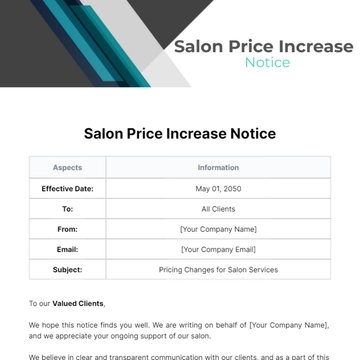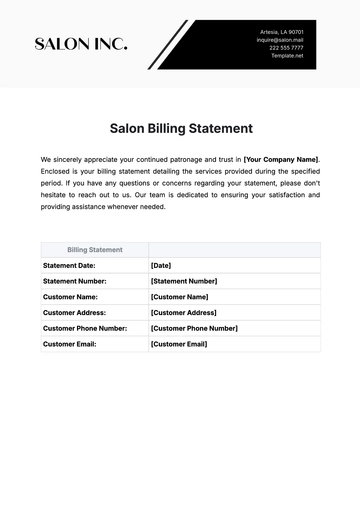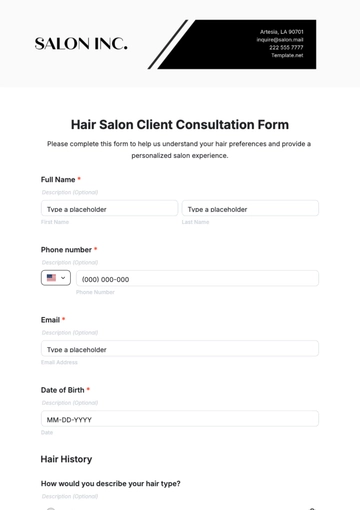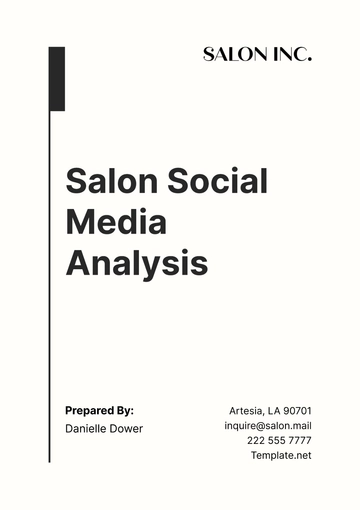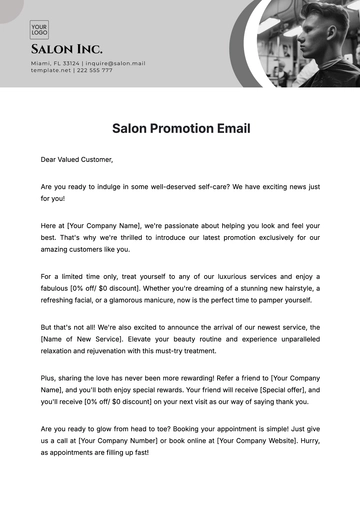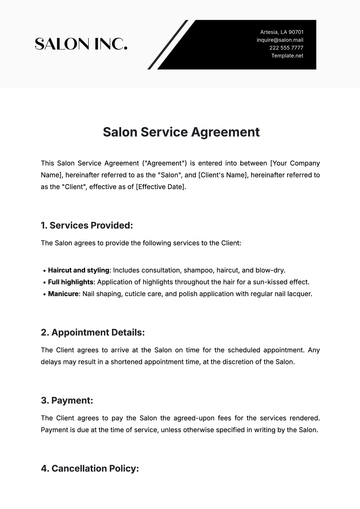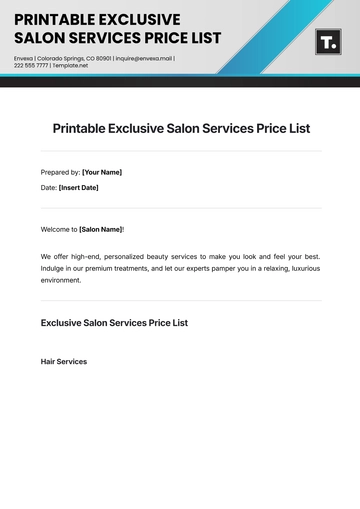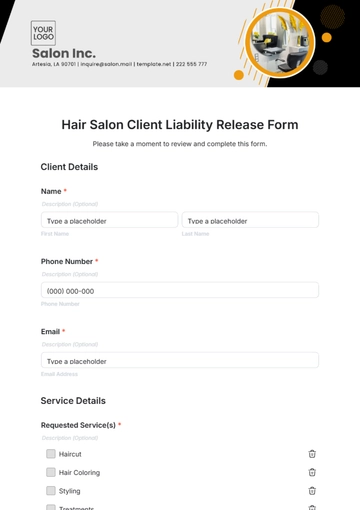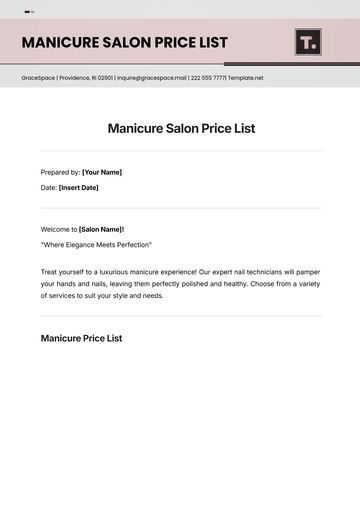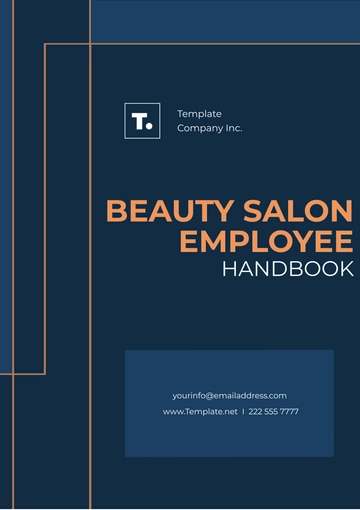Free Salon Financial Strategy
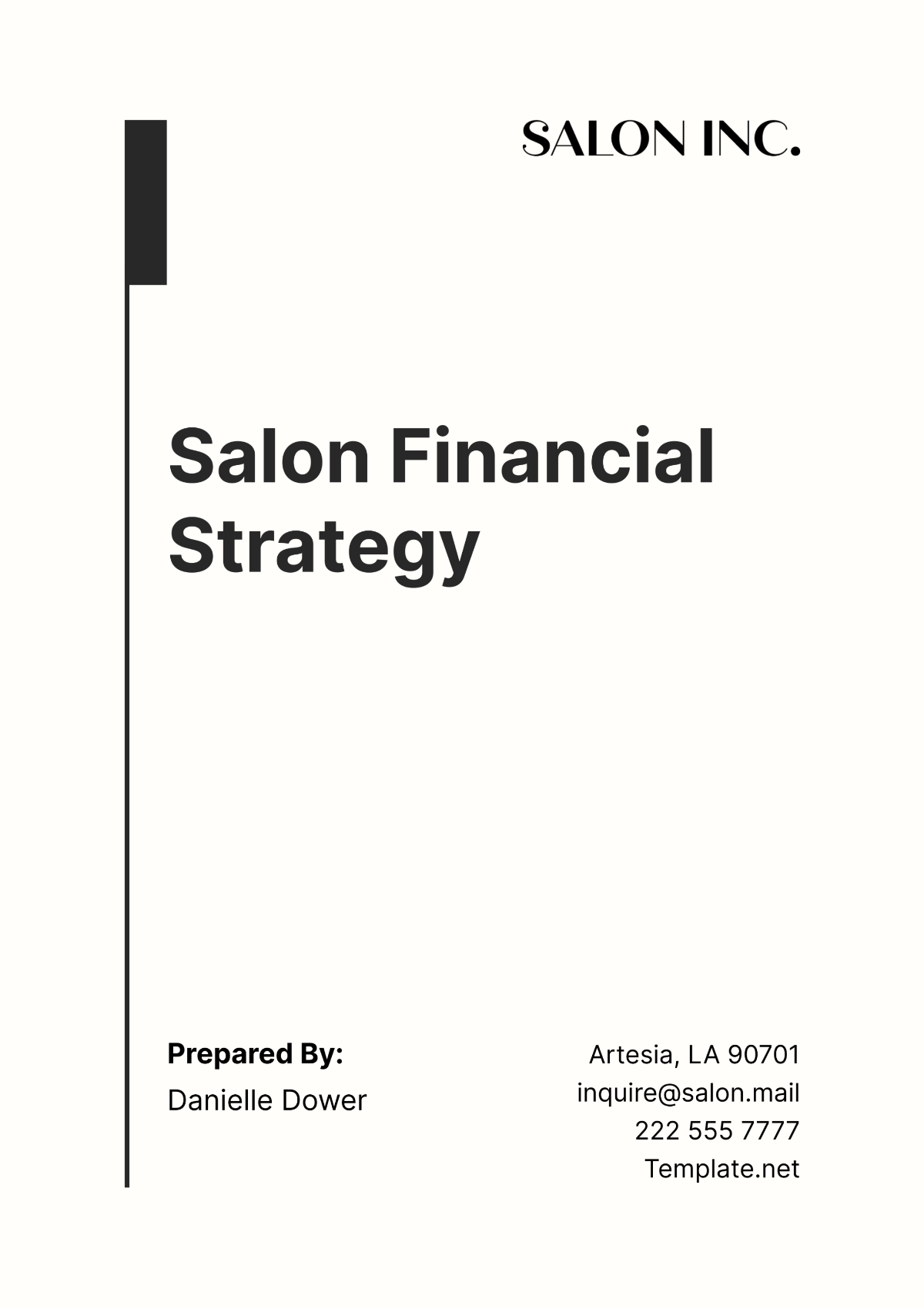
I. Executive Summary
[YOUR COMPANY NAME] stands as a beacon of excellence in the salon industry, dedicated to providing exceptional customer service and premium product offerings. Under the leadership of [YOUR NAME], this financial strategy document aims to outline the comprehensive financial goals and tactics that will not only optimize profitability but also foster sustainable growth.
The core of our strategy revolves around prudent financial management, innovative revenue generation methods, and vigilant cost control measures. Our commitment is to harness these strategies to enhance the financial health and market position of [YOUR COMPANY NAME]. The following sections will detail the specific objectives and methods by which our team will drive financial success.
Key Highlights:
Leadership: Guided by [YOUR NAME], our finance team will leverage their expertise to steer the financial direction of the salon.
Goals: Central to our mission are increased profitability, reduced operational expenses, and improved customer retention.
Innovation: Implementation of cutting-edge technology and creative financial tactics to stay ahead in a competitive market.
Sustainability: Focus on long-term financial health and continuous growth through adaptable strategies.
II. Financial Objectives
For the forthcoming fiscal year, [YOUR COMPANY NAME] has set ambitious yet achievable financial targets that align with our strategic vision of expansion and enhanced market presence. These objectives are designed to create a robust framework for financial decisions and are pivotal to our long-term success.
Key Performance Indicators (KPIs):
Revenue Growth: Aim for a 15% increase in total revenue compared to the previous fiscal year.
Cost Reduction: Target a 10% reduction in non-essential expenditures.
Client Retention: Maintain a client retention rate of over 85%, reflecting superior customer satisfaction.
Detailed Financial Goals:
Total Revenue: Increase from $[Amount] to $[Amount], representing a 15% growth.
Operational Costs: Reduce current spending of $[Amount] by 10%, resulting in savings of $B.
Client Retention Rate: Implement strategies to maintain or improve the current 85% rate, aiming for 90%.
These goals are not merely numbers but are milestones that will guide our team’s efforts throughout the year. Achieving these targets will require a coordinated approach across all departments, leveraging both innovative and time-tested strategies to deliver exceptional results.
III. Revenue Enhancement Strategies
To achieve the financial upliftment of [YOUR COMPANY NAME], a multi-faceted approach to enhancing revenue streams will be implemented. Our strategies will focus on introducing new services, optimizing pricing, and fostering customer loyalty, each designed to significantly contribute to our financial targets.
Introduction of New High-Margin Services:
Service Innovation: Launch at least three new services by the end of Q2. These will cater to different customer segments and include:
Advanced hair treatment services.
Exclusive beauty and wellness packages.
Customized grooming sessions for niche markets.
Pricing Strategy Optimization:
Semi-Annual Price Adjustments: Adjust service prices every six months to reflect market conditions and input costs, ensuring competitiveness and profitability. This will involve:
Comprehensive market analysis to gauge competitor pricing.
Customer feedback collection to understand pricing sensitivity.
Cost analysis to ensure price adjustments contribute positively to our margins.
Development of a Tiered Loyalty Program
To enhance customer loyalty and drive repeat business, [YOUR COMPANY NAME] plans to implement a structured tiered loyalty program by Q3. The program is designed to cater to different levels of client engagement and enhance overall customer lifetime value. Below is a detailed breakdown of each tier and the benefits offered:
Tier | Client Type | Description | Benefits |
|---|---|---|---|
Bronze | New or Occasional | For clients who visit less frequently. | Discounts on certain services after a number of visits. |
Silver | Regular | For clients who visit more regularly. | Higher discounts and special monthly offers. |
Gold | VIP | For top-tier clients who are highly loyal to the salon. | Exclusive access to new services, special event invitations, and substantial discounts. |
Each tier is crafted to not only reward existing customers but also to attract new clients through word-of-mouth and targeted promotions. This strategy is expected to directly impact our revenue growth and client retention metrics, contributing to the overall financial health of the salon.
These revenue enhancement strategies are essential to our financial strategy, designed not just to meet but exceed our outlined financial objectives. By implementing these initiatives, we anticipate a significant boost in [YOUR COMPANY NAME]'s profitability and market share, reinforcing our position as a leader in the salon industry.
IV. Cost Management Strategies
Effective cost management is essential to the financial stability and growth of [YOUR COMPANY NAME]. By implementing strategic measures to reduce overheads and streamline operations, we aim to not only save money but also enhance operational efficiency. The following strategies outline our approach to achieving these objectives.
Supplier Negotiations:
Regular Supplier Reviews: Conduct semi-annual reviews with all key suppliers to renegotiate pricing and terms. This proactive approach ensures that [YOUR COMPANY NAME] benefits from the best market rates and conditions.
Bulk Purchase Discounts: Leverage higher volume purchases to secure significant discounts and better credit terms, reducing the overall cost of goods sold.
Inventory Management:
System Upgrade: By Q3, introduce a new, advanced inventory management system that minimizes waste and prevents overstock situations.
Inventory Efficiency: Regular audits and adjustments based on real-time data will help maintain optimal inventory levels, reducing costs associated with unsold stock and spoilage.
Staffing Optimization:
Data-Driven Rostering: Use data analytics to align staff scheduling closely with customer traffic patterns. This will ensure that staffing is efficient during peak times without being overstaffed during slower periods.
Training Programs: Invest in employee training to improve efficiency and productivity, reducing the need for overtime costs and enhancing customer service.
V. Financial Controls and Monitoring
To ensure the effective implementation and ongoing management of our financial strategies, [YOUR COMPANY NAME] will establish robust financial controls and a systematic monitoring plan. These controls are designed to provide real-time insights into financial performance and facilitate timely adjustments to our strategy.
Financial Reporting System:
Implementation of Financial Software: Deploy modern financial software tools by the end of Q1 to enable real-time tracking of cash flow and other critical financial metrics.
Regular Financial Reviews: Quarterly financial reviews to compare actual performance against our financial targets, with immediate adjustments made as necessary.
Risk Management and Contingency Planning:
Risk Identification: Regularly identify and assess potential financial risks that could impact the business.
Contingency Measures: Develop and maintain a set of actions to be taken in response to financial shortfalls or unexpected financial challenges.
Monitoring and Feedback System:
To maintain transparency and adaptability in our financial strategy, a structured feedback and monitoring system will be essential. This system will not only track the effectiveness of implemented strategies but also gather insights from both internal stakeholders and customers to inform continuous improvement.
Aspect | Tools/Methods | Frequency | Responsible Party |
|---|---|---|---|
Financial Performance | Financial software for real-time metrics tracking. | Ongoing | Finance Department |
Strategy Adjustment | Quarterly financial reviews and reports. | Quarterly | [YOUR NAME] & Finance Team |
Risk Management | Regular risk assessments and updates to contingency plans. | Bi-annually | Risk Management Team |
Employee Feedback | Surveys and regular meetings to discuss financial strategies. | Bi-annually | HR Department |
Customer Feedback | Feedback forms, loyalty program data analysis. | Quarterly | Marketing Team |
This systematic approach ensures that all aspects of our financial strategy are continually assessed and refined, keeping [YOUR COMPANY NAME] on track towards achieving its financial goals.
VI. Conclusion
The financial strategy detailed in this document provides a comprehensive roadmap for [YOUR COMPANY NAME] to not only achieve but exceed its financial objectives. Under the leadership of [YOUR NAME], the finance team is committed to executing these strategies meticulously, ensuring the sustainable growth and profitability of the salon.
By regularly updating and revising this strategy, we can adapt to evolving market conditions and seize emerging business opportunities. This dynamic approach, combined with rigorous financial controls and a responsive feedback system, will position [YOUR COMPANY NAME] as a leader in the industry, renowned for both its financial acumen and its exceptional customer service.
- 100% Customizable, free editor
- Access 1 Million+ Templates, photo’s & graphics
- Download or share as a template
- Click and replace photos, graphics, text, backgrounds
- Resize, crop, AI write & more
- Access advanced editor
Unleash the power of financial foresight with Template.net's Salon Financial Strategy Template. Tailored for visionary salon owners, this template is your roadmap to sustainable growth and profitability. Exclusive to Template.net, it seamlessly combines strategic insight with practicality. Customize every aspect effortlessly using our AI editor tool, ensuring alignment with your salon's goals. Chart a course towards financial success with confidence and clarity.



